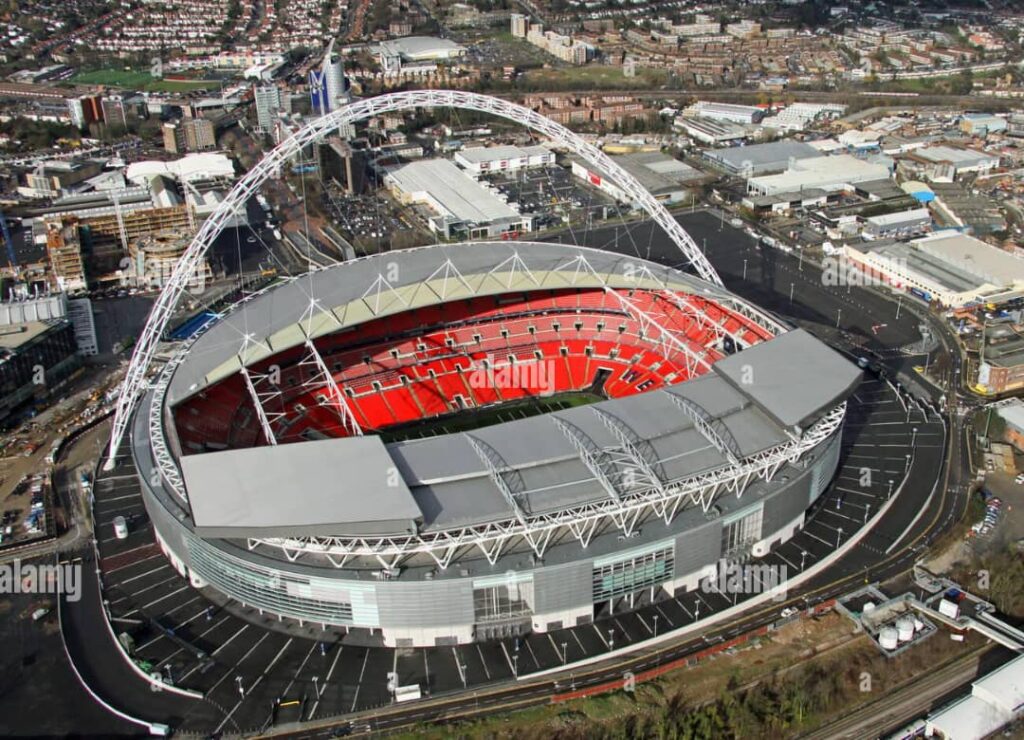
INTRODUCTION
Stadiums are more than just massive concrete structures filled with seats and turf. They are arenas where history is made, where nations unite and divide, and where passion and spectacle converge. Across the globe, famous stadiums have become cultural landmarks and architectural marvels. This post explores the most renowned stadiums on each continent, delving into their history, significance, architectural design, and the unforgettable moments that have made them legendary. Whether for football (soccer), American football, rugby, athletics, or concerts, these stadiums symbolize more than sport—they embody human achievement and collective memory.
Europe
1. Wembley Stadium (London, England)
- Opened: 2007 (new structure)
- Capacity: 90,000
- Home to: England national football team, FA Cup Final
Wembley is perhaps the most iconic football stadium in the world. The old Wembley, built in 1923, was synonymous with British football. Its replacement, opened in 2007, features a 133-meter-high arch that has become a symbol of modern London. Wembley has hosted the UEFA Champions League Final, Euro 2020 final, and concerts by legends like Queen and Beyoncé.
Here are four distinctive shots of Wembley Stadium:
Aerial overview showing the stadium’s iconic arch and surrounding landscape 🌆
Interior view capturing the lush pitch and seating tiers—a true sense of scale
Golden sunset angle, highlighting the stadium’s silhouette in the evening glow
Detailed aerial close-up focusing on architectural lines and roof structure
Let me know if you’d like high-resolution downloads, historical shots, interior concourse views, or close-ups of the famous arch!


2. Camp Nou (Barcelona, Spain)
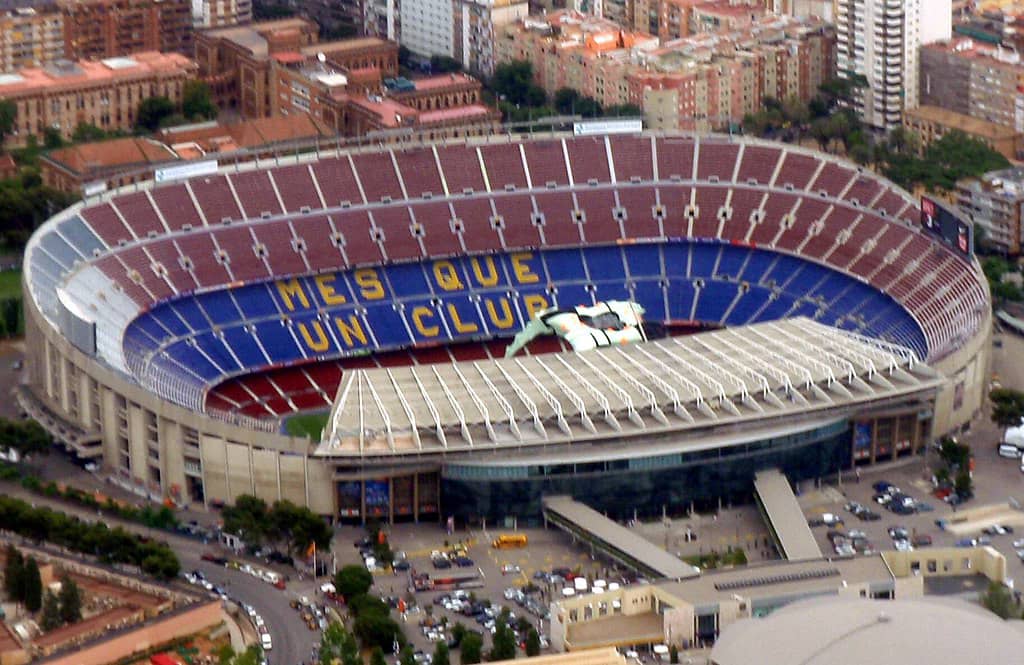
- Opened: 1957
- Capacity: 99,354
- Home to: FC Barcelona
Europe’s largest stadium is not just a football ground; it’s a political and cultural icon in Catalonia. Camp Nou has been the stage for FC Barcelona’s rise to global dominance and has hosted World Cup matches and Champions League finals. It is currently undergoing renovation and will be renamed Spotify Camp Nou.
Here are four engaging aerial and artistic shots of Camp Nou in Barcelona:
- A classic high-resolution aerial view showcasing the stadium’s full structure and tiers.
- A birds-eye angle that highlights the pitch nestled within the vibrant cityscape.
- A current aerial perspective of the renovated Spotify Camp Nou during construction.
- A nighttime shot capturing the stadium’s illuminated oval form and energetic atmosphere.
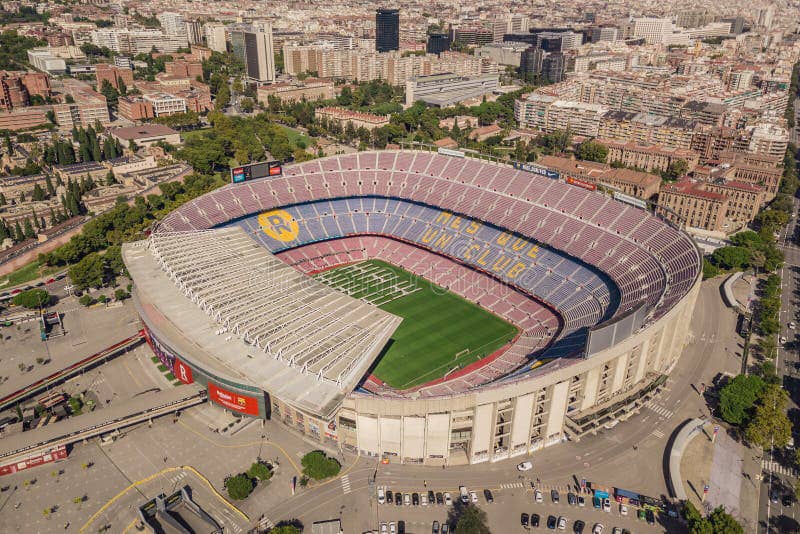
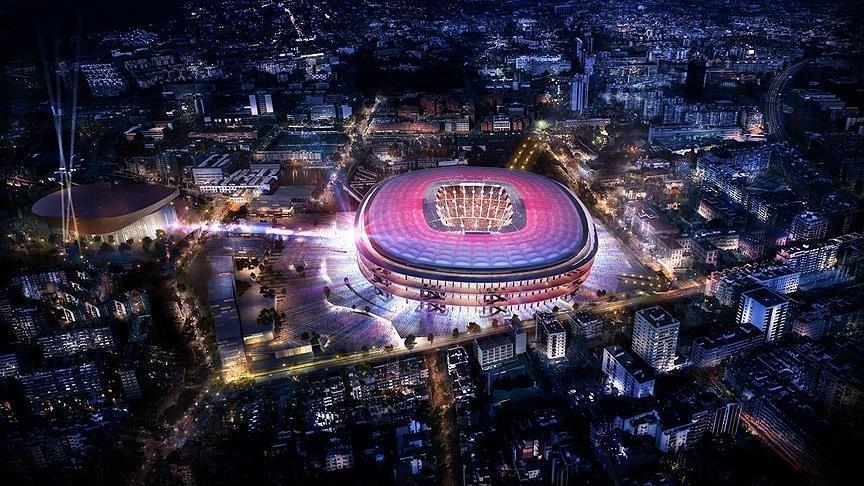

3. San Siro (Milan, Italy)
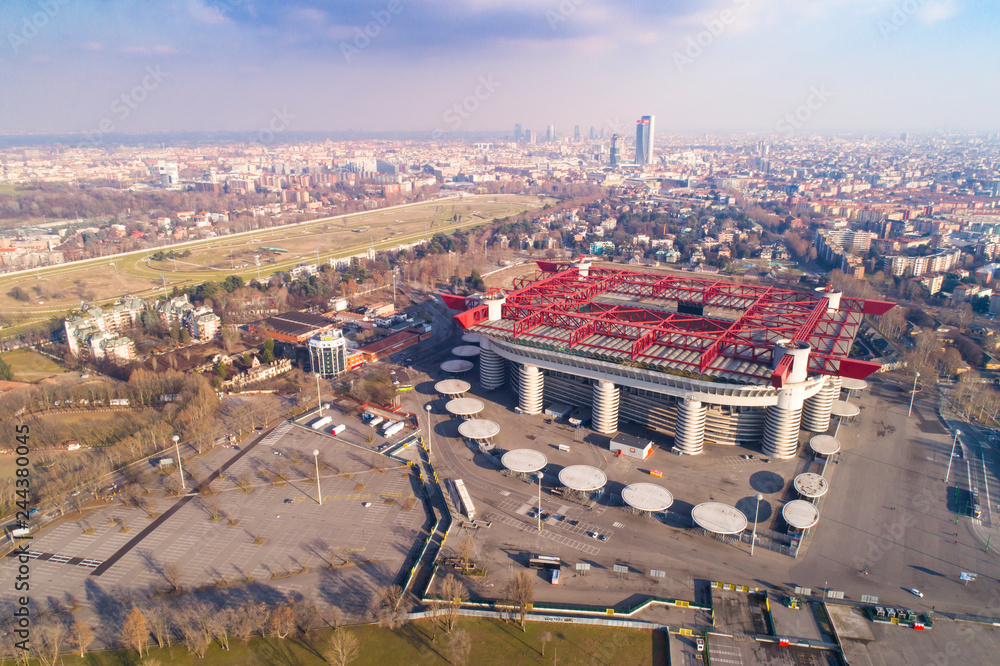
- Opened: 1926
- Capacity: 75,923
- Home to: AC Milan and Inter Milan
The San Siro is a cathedral of football in Italy, unique for being shared by two fierce rivals. With its towering spiral ramps and imposing design, it remains one of the most intimidating stadiums for visiting teams. Plans for a new stadium threaten its existence, sparking public outcry.
Here are four distinct aerial views of San Siro (Stadio Giuseppe Meazza) in Milan:
- A sweeping panorama showcasing the stadium against Milan’s urban landscape.
- A closer perspective highlighting the iconic cylindrical towers and red roof.
- A detailed aerial shot emphasizing the structure’s tiers and surrounding area.
- A broad view that includes neighboring landmarks like the racecourse, putting San Siro into context within the city.
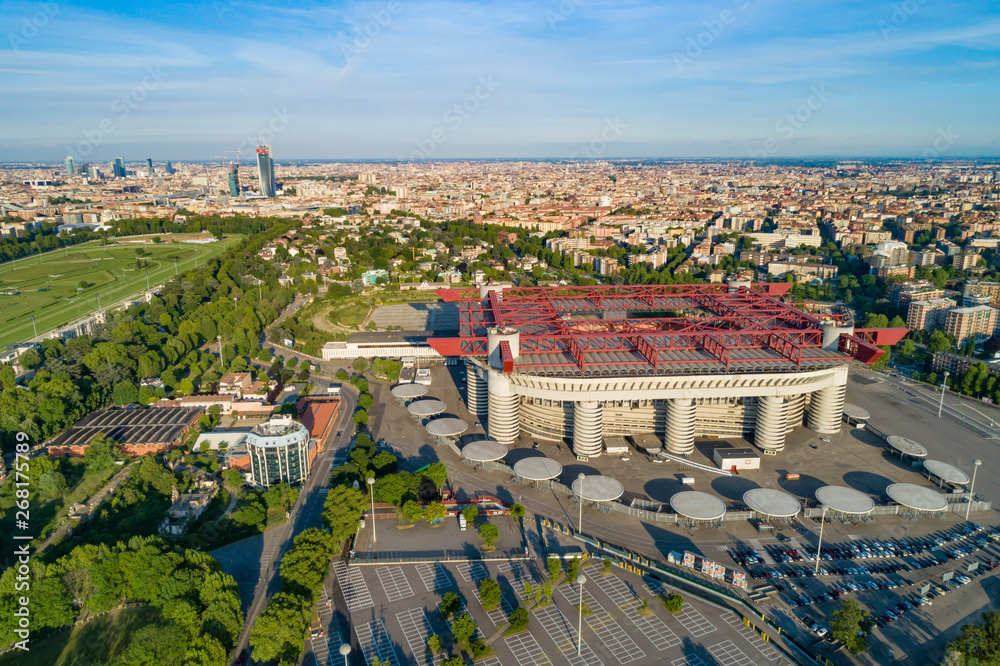
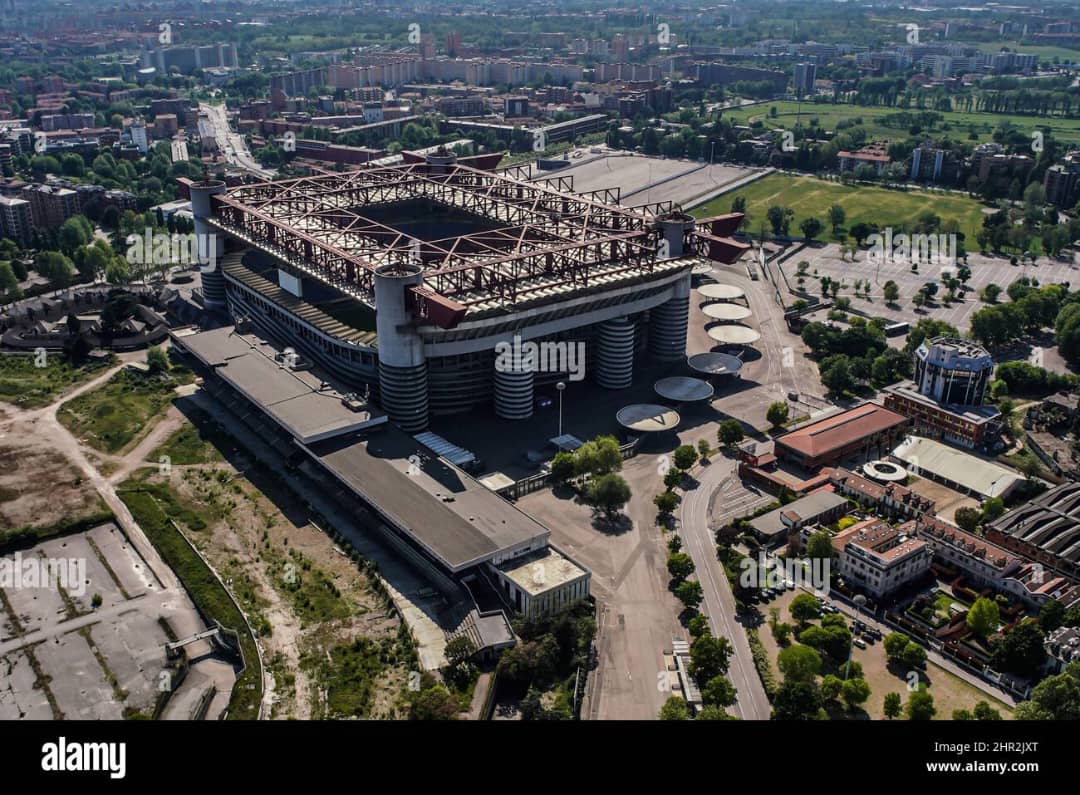
4. Allianz Arena (Munich, Germany)

- Opened: 2005
- Capacity: 75,000
- Home to: Bayern Munich
Known for its luminous facade that changes color based on the team playing, Allianz Arena is a modern engineering masterpiece. It hosted the opening match of the 2006 FIFA World Cup and continues to be a hub for both club and international matches.
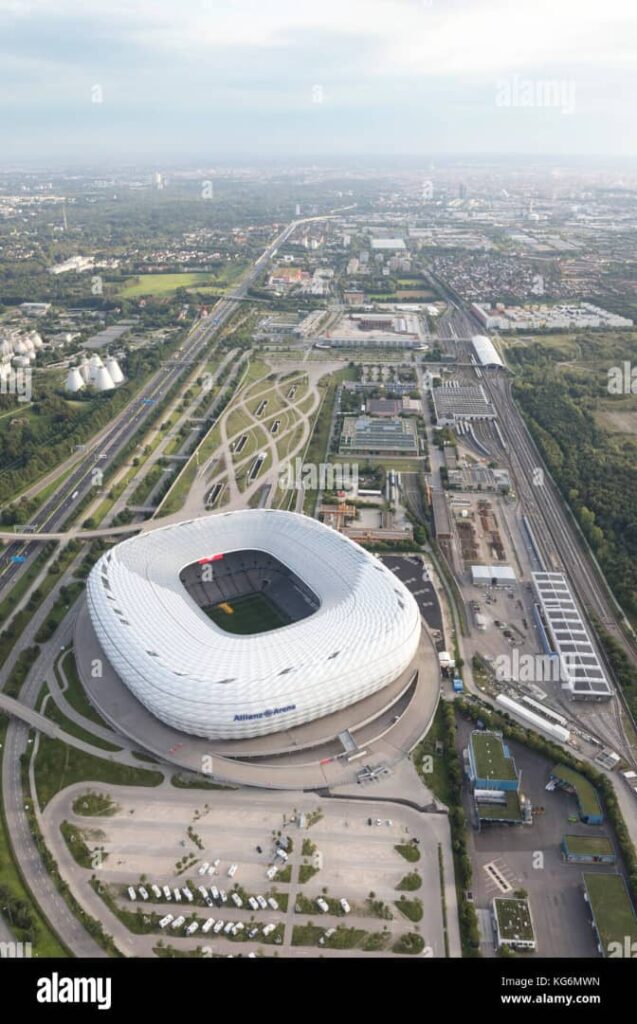


North America
5. Rose Bowl (Pasadena, California, USA)
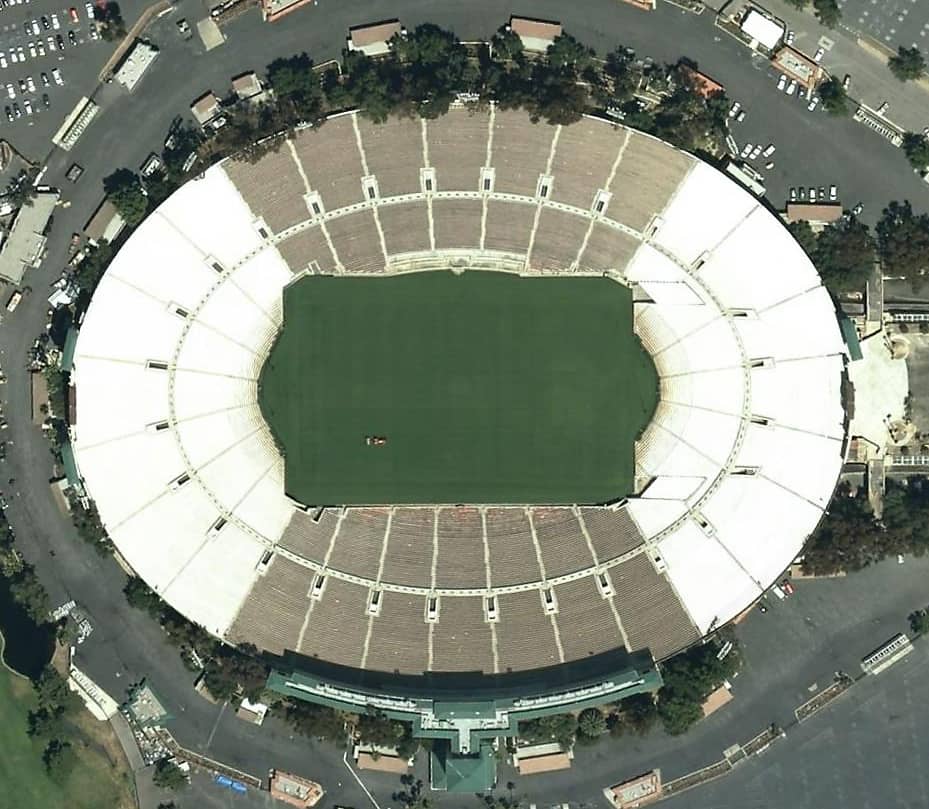
- Opened: 1922
- Capacity: 88,565
- Known for: College football, 1994 FIFA World Cup
The Rose Bowl is an American treasure. Known primarily for American football, it also hosted the 1994 FIFA World Cup Final and the 1999 Women’s World Cup Final. Its scenic location and rich history make it one of the most beloved stadiums in the U.S.
Here are four captivating aerial shots of the Rose Bowl Stadium in Pasadena, California:
- Panoramic view nestled among the San Gabriel foothills — a sweeping stadium-wide perspective.
- Classic overhead shot showing the full oval layout and lush green field surrounded by seating tiers.
- NASA-sourced image from 2008 — a crisp, public-domain view highlighting the stadium’s iconic outline
- Close aerial angle emphasizing both the field and external structure with surrounding greenery and parking.
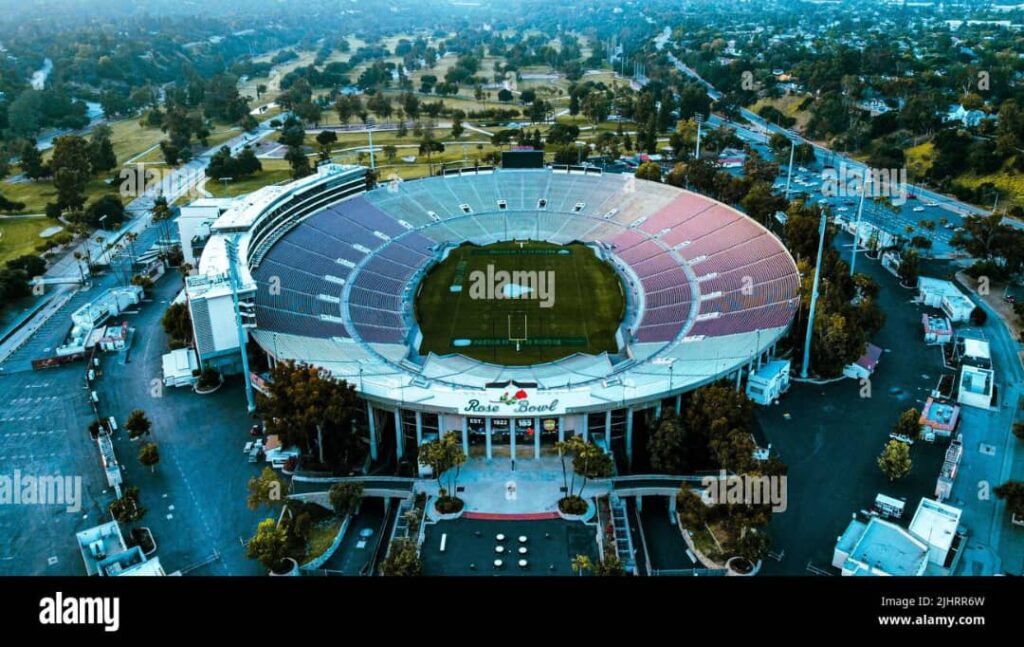
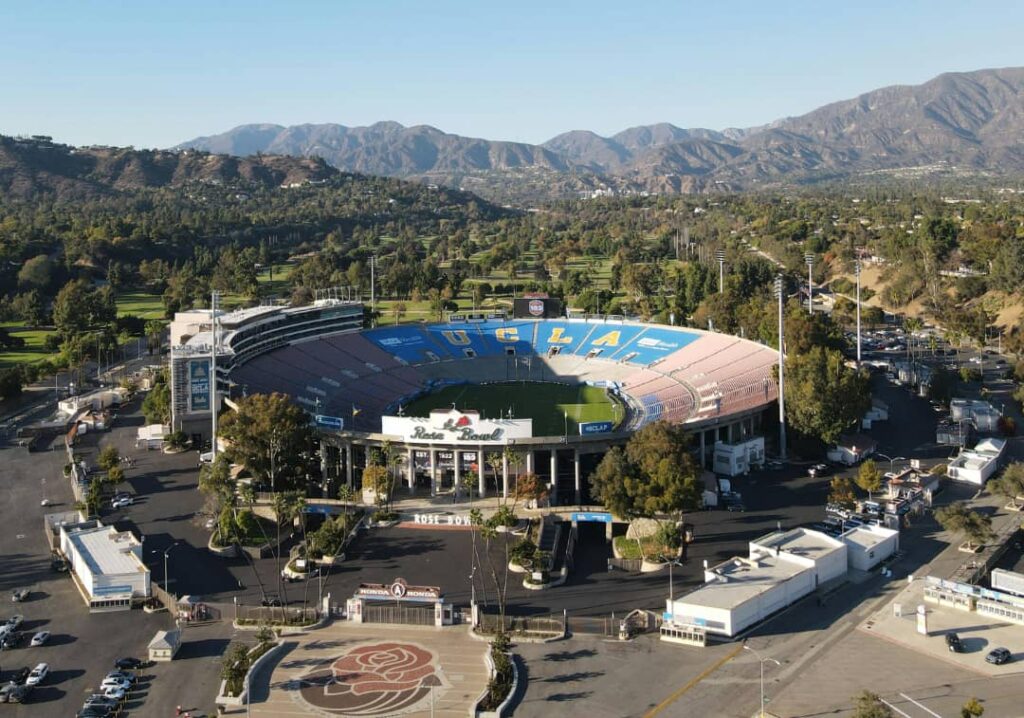
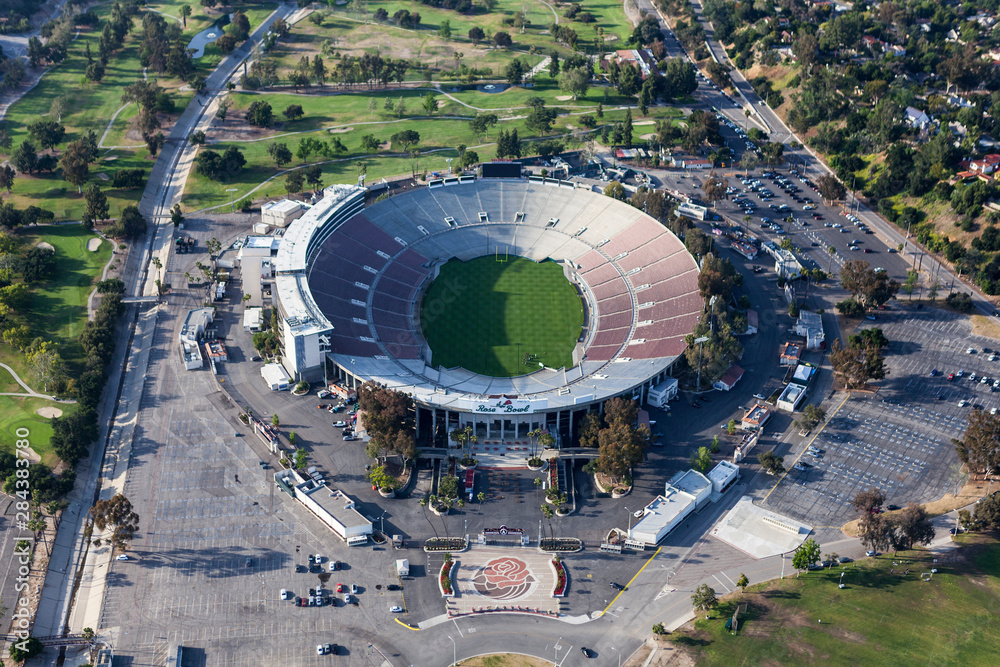
6. AT\&T Stadium (Arlington, Texas, USA)
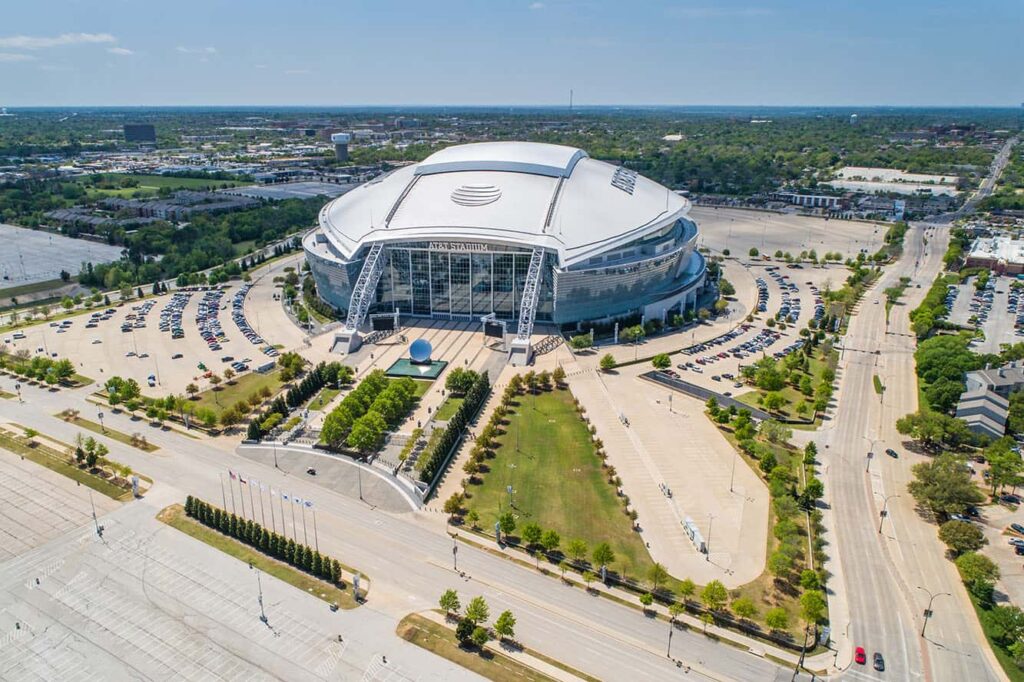
- Opened: 2009
- Capacity: 80,000 (expandable)
- Home to: Dallas Cowboys (NFL)
Also known as “Jerry World,” AT\&T Stadium is a futuristic marvel with a retractable roof and one of the world’s largest HD video screens. It regularly hosts NFL games, WrestleMania, concerts, and international soccer matches.
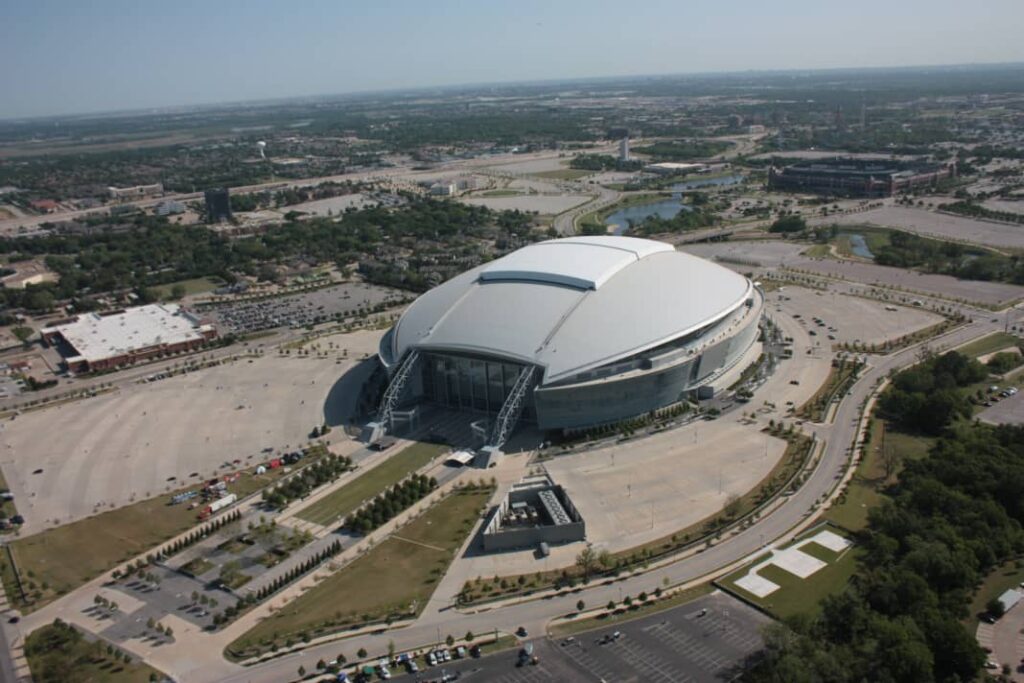

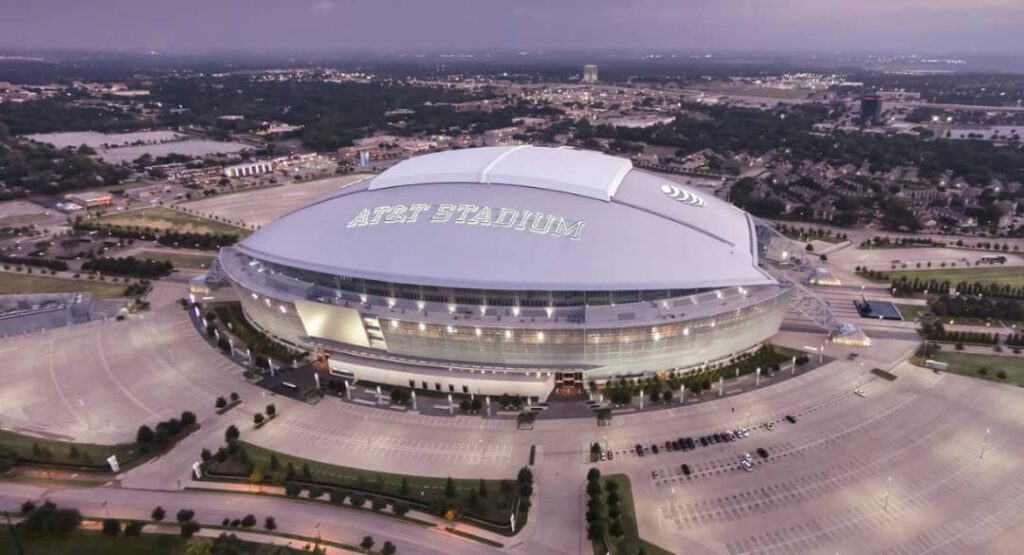
7. Azteca Stadium (Mexico City, Mexico)

- Opened: 1966
- Capacity: 87,523
- Home to: Club América, Mexico national team
The Estadio Azteca has hosted two FIFA World Cup Finals (1970 and 1986), including the famous Maradona “Hand of God” and “Goal of the Century” matches. It remains one of the most storied venues in football history.
Here are four striking aerial shots of Estadio Azteca in Mexico City:
- A sweeping drone panorama capturing the stadium nestled within the urban sprawl.
- A recent high‑resolution view showcasing the circular tiers and roof structure.
- A classic image highlighting its iconic facade and surrounding plaza.
- A sharp top-down perspective just before renovations ahead of the 2026 FIFA World Cup
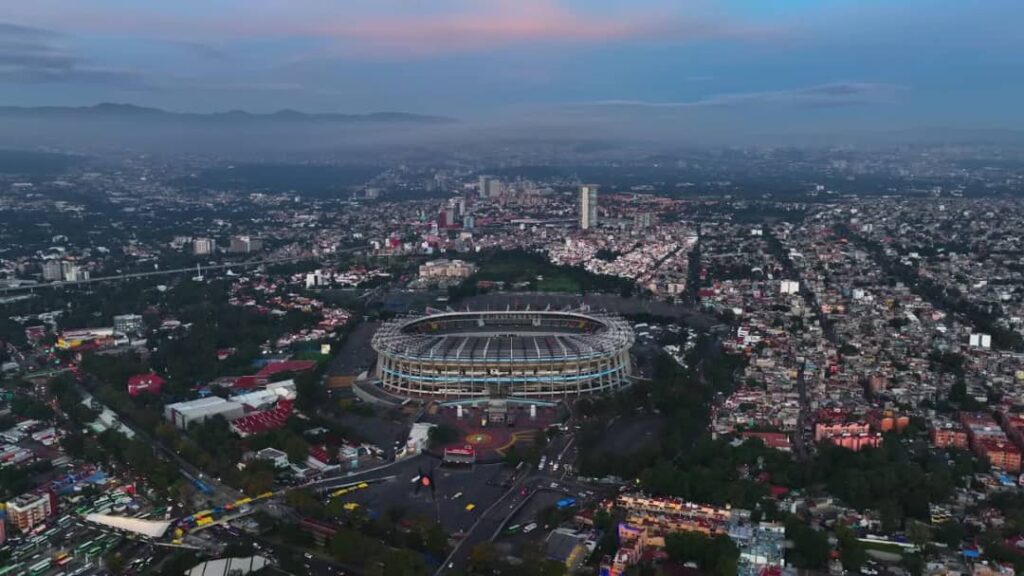
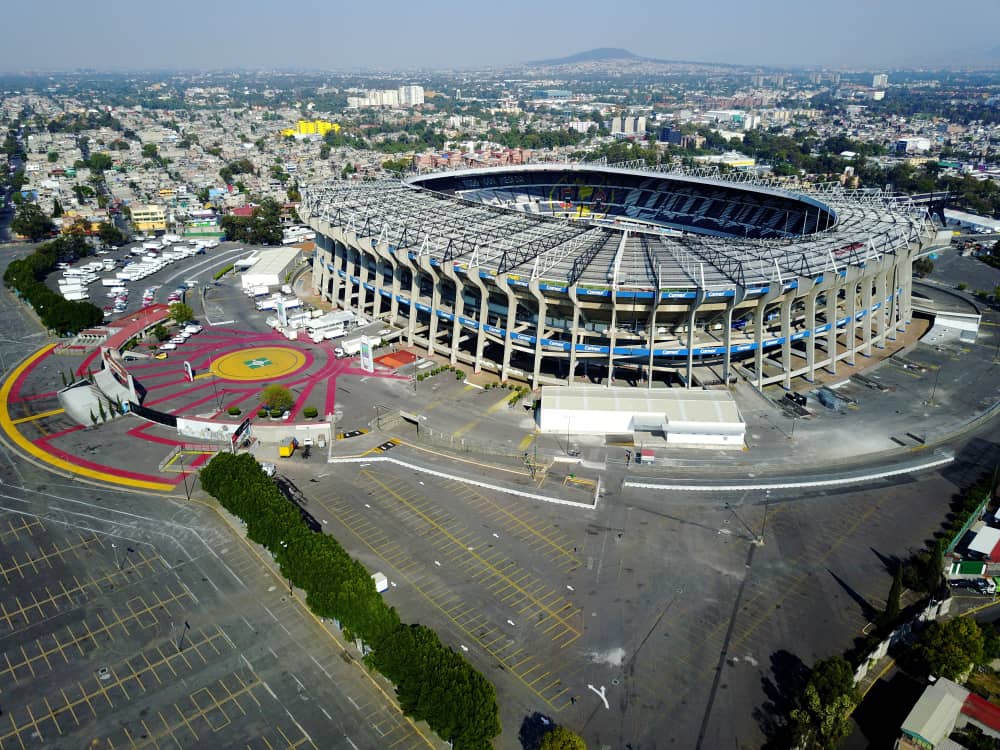
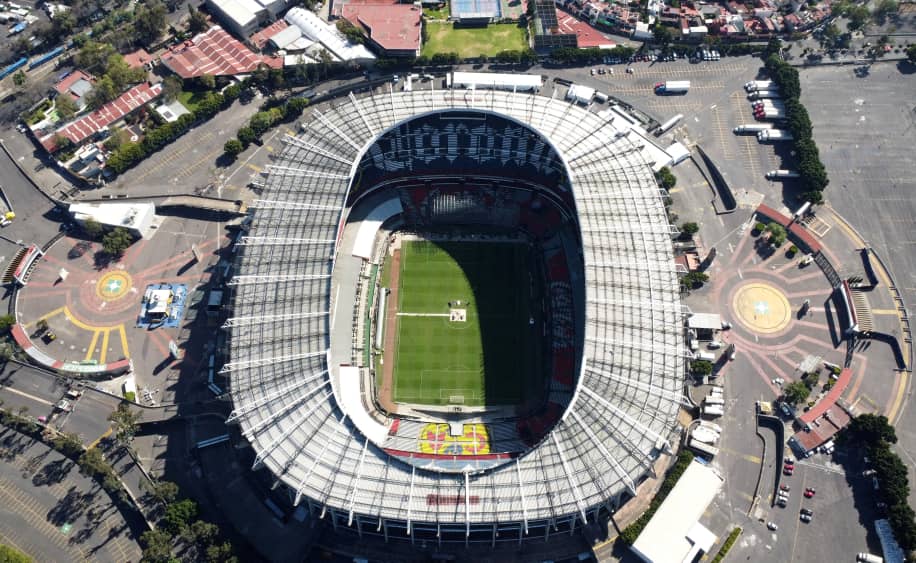
South America
8. Maracanã Stadium (Rio de Janeiro, Brazil)
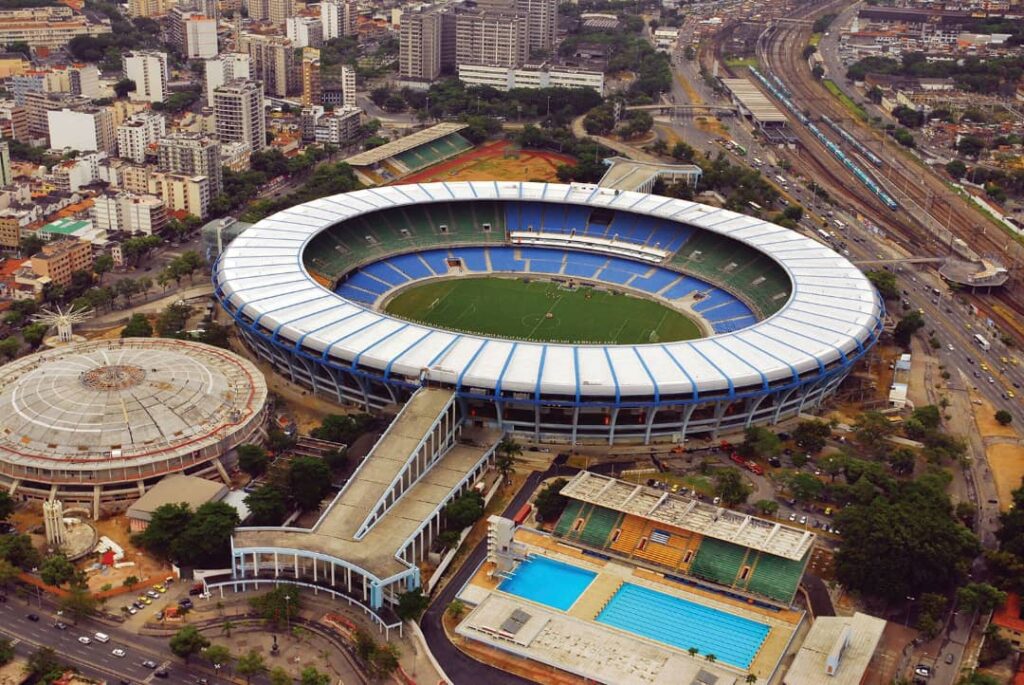
- Opened: 1950
- Capacity: ~78,000
- Home to: Flamengo, Fluminense
Maracanã was once the world’s largest stadium and remains a monument of football lore. It hosted the 1950 and 2014 FIFA World Cup Finals, the 2016 Olympic opening and closing ceremonies, and countless Copa Libertadores matches.
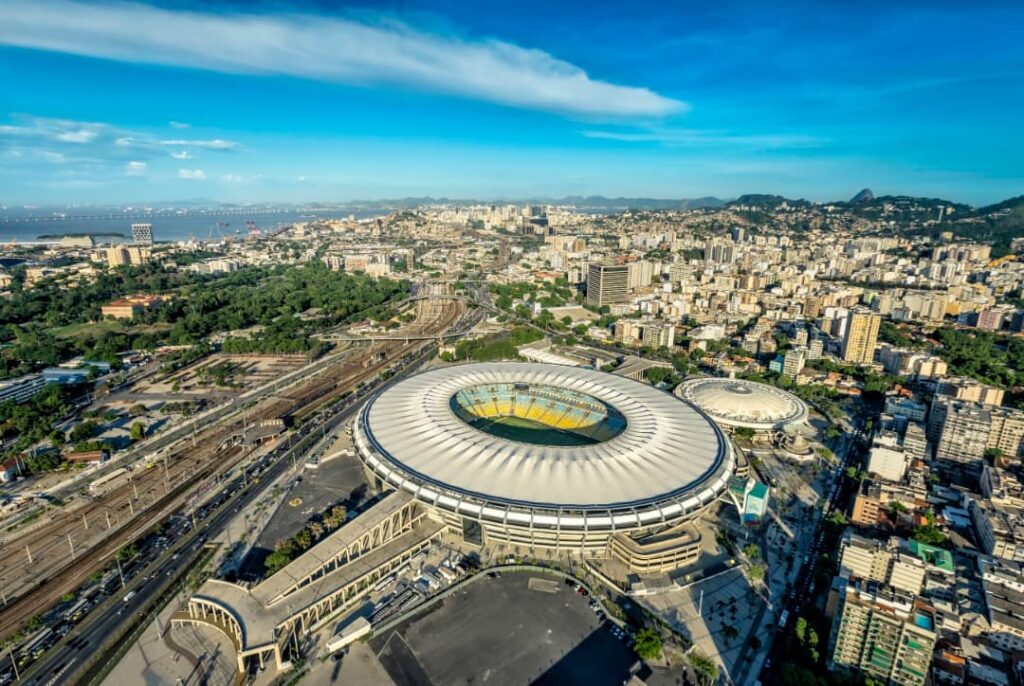
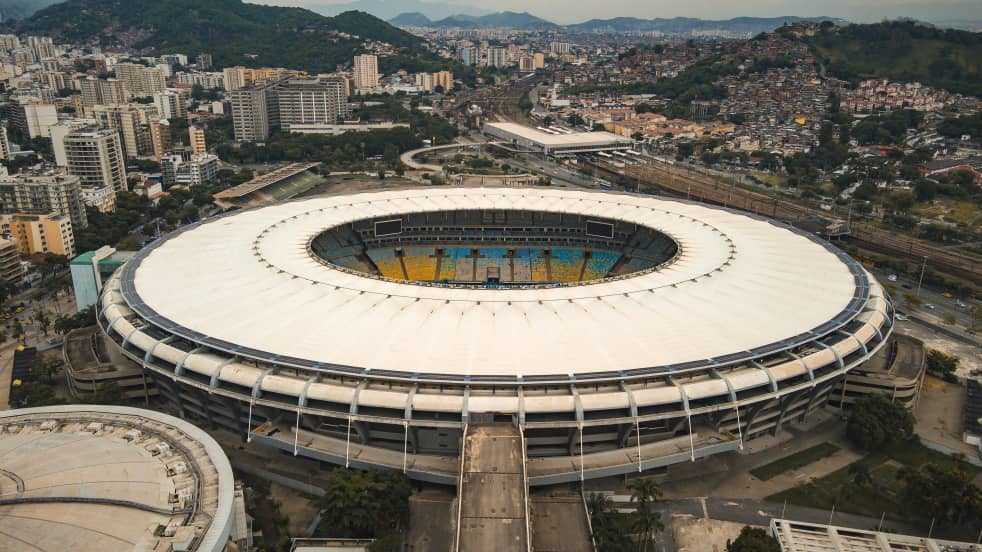
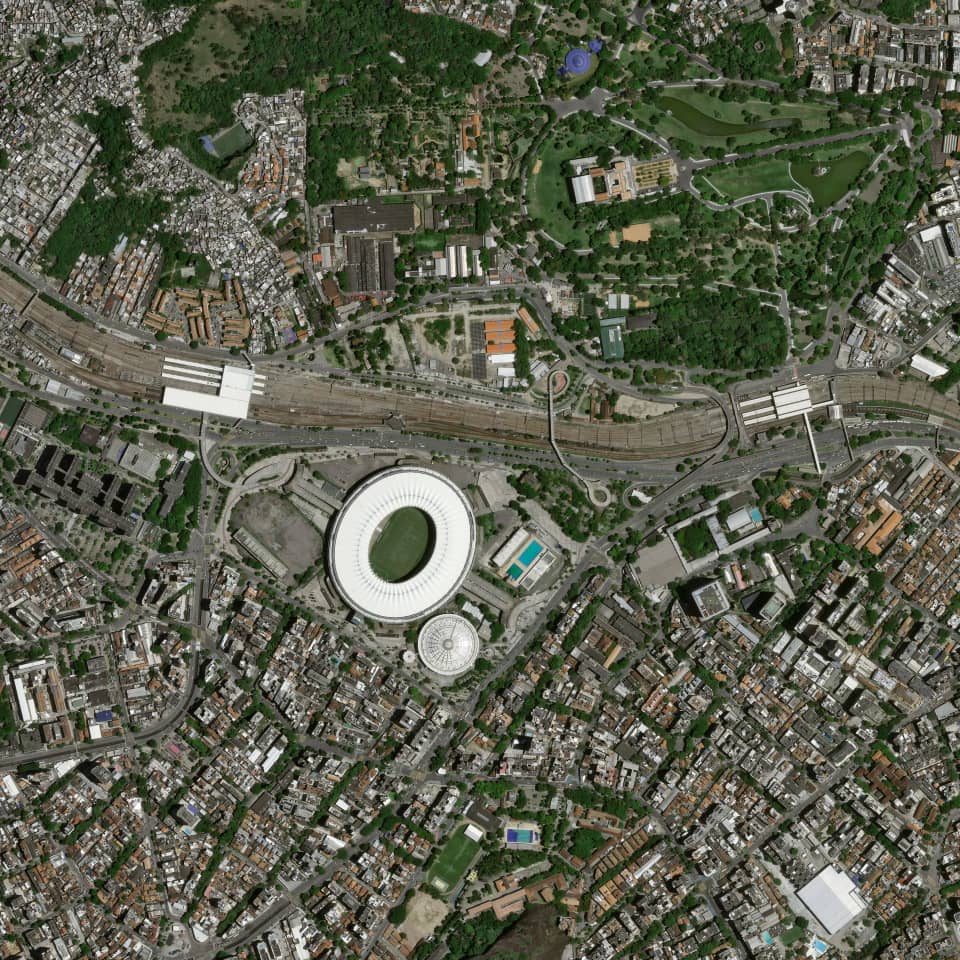
9. La Bombonera (Buenos Aires, Argentina)
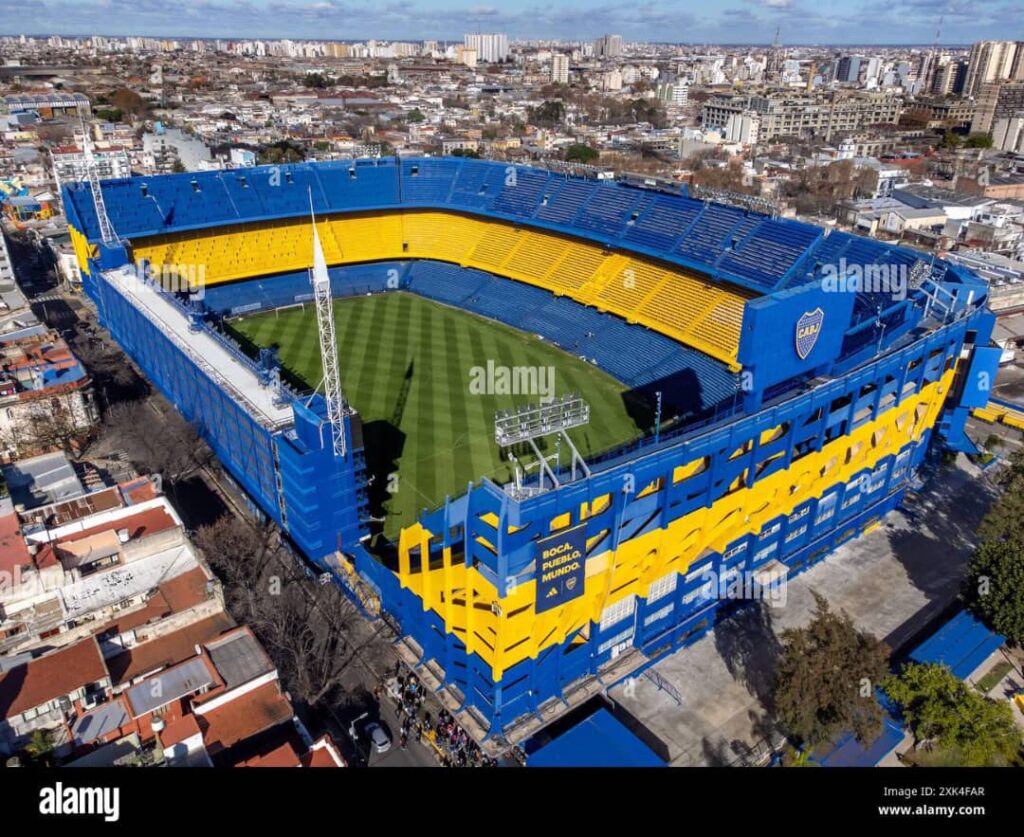
- Opened: 1940
- Capacity: 54,000
- Home to: Boca Juniors
Officially known as Estadio Alberto J. Armando, La Bombonera is famed for its steep stands and electric atmosphere. The stadium is emblematic of Buenos Aires’ working-class culture and fierce football identity.
Here are four stunning aerial views of Maracanã Stadium in Rio de Janeiro:
- A sweeping drone shot capturing the stadium nestled within the city landscape.
- A high-resolution satellite image from Airbus showcasing the full circular design and adjacent structures ([space-solutions.airbus.com][1]).
- A colorful aerial perspective from Britannica, highlighting the iconic bowl and surrounding pools .
- A crisp drone photograph by Victor Barbosa, offering a close-up view with excellent lighting
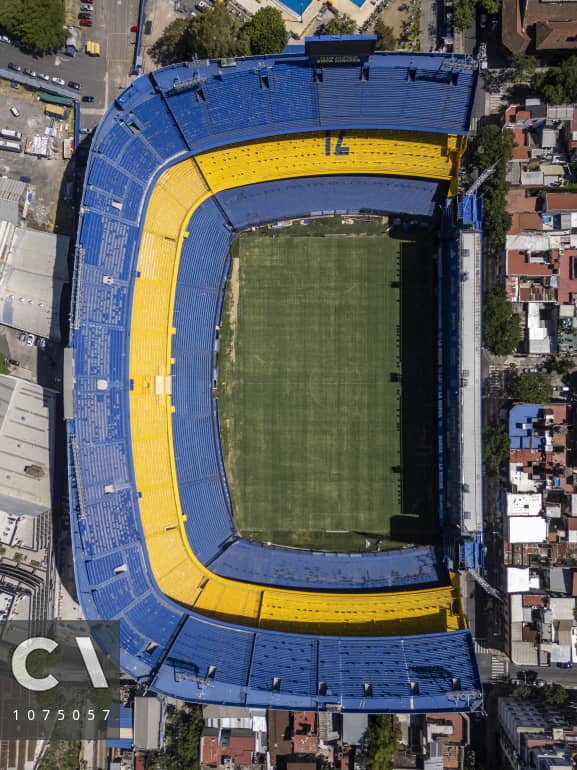
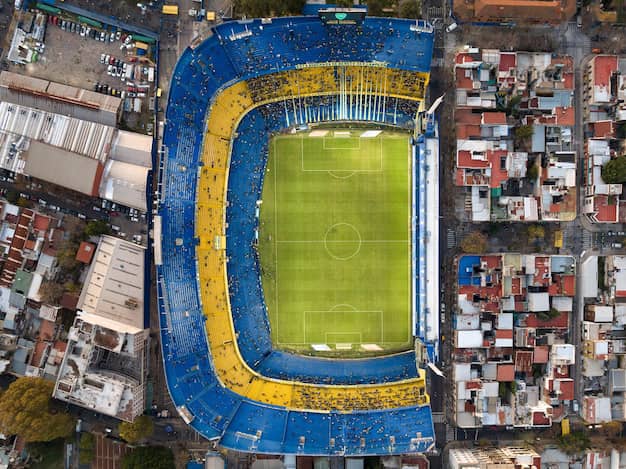

Asia
10. Salt Lake Stadium (Kolkata, India)
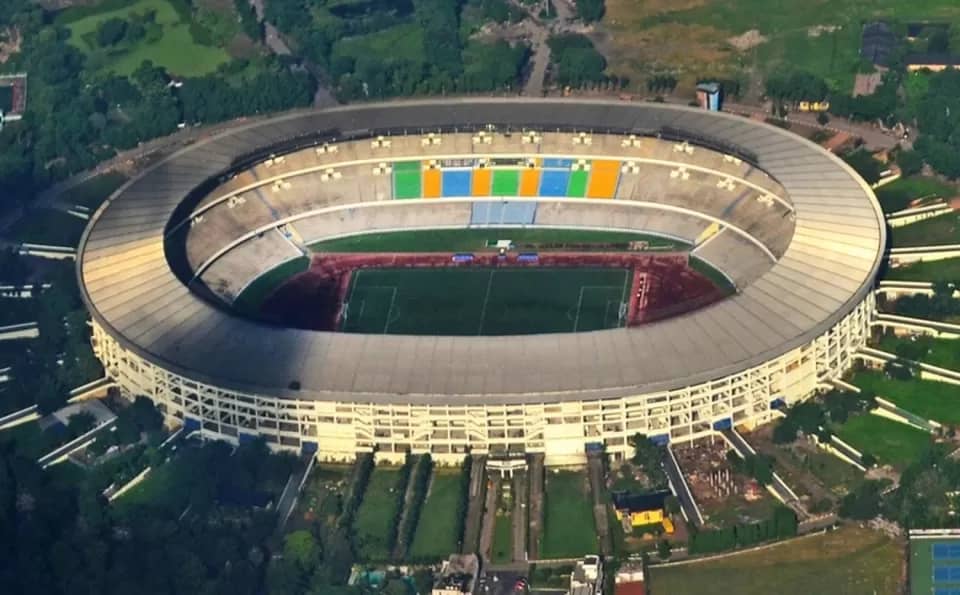
- Opened: 1984 (renovated in 2011)
- Capacity: ~85,000
- Home to: ATK Mohun Bagan, East Bengal
India’s largest stadium, Salt Lake, has hosted major international matches and is a hub for the passionate football culture of Kolkata. Once the second-largest stadium in the world, it was downsized for comfort and modernization.
Here are four striking aerial views of Salt Lake Stadium (Vivekananda Yuba Bharati Krirangan) in Kolkata:
- A panoramic shot from 2012 showing the massive circular bowl and its urban surroundings
- A crisp 2016 image capturing the stadium’s full oval layout amidst nearby neighborhoods
- A wider-angle view from 2021 highlighting adjacent green areas and cityscape .
- A vibrant color perspective showcasing the remodeled exterior and seating tiers.

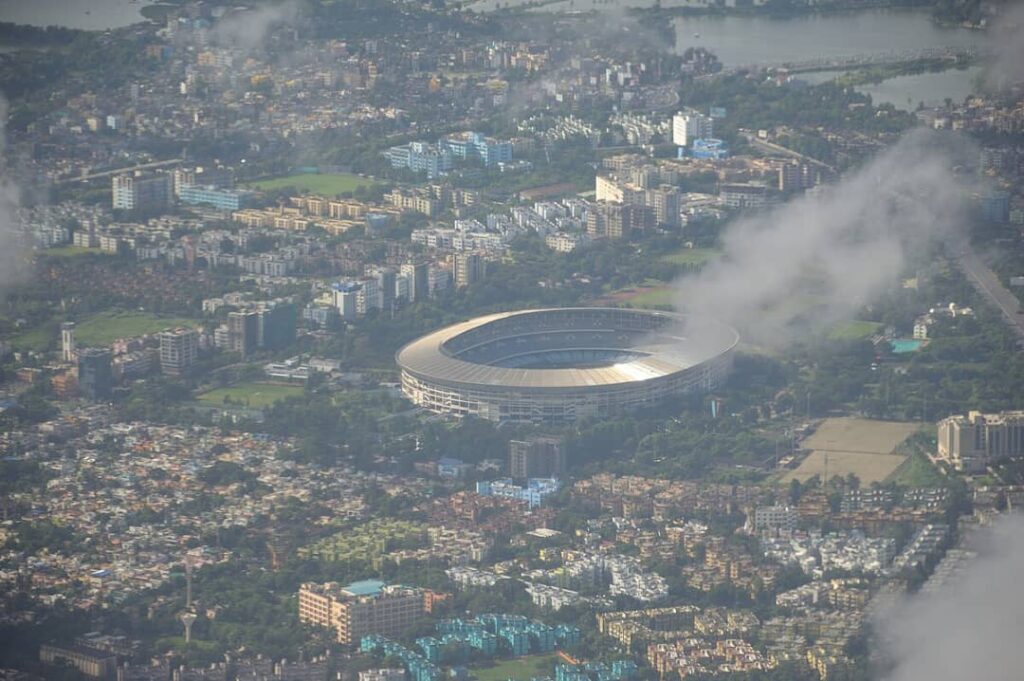
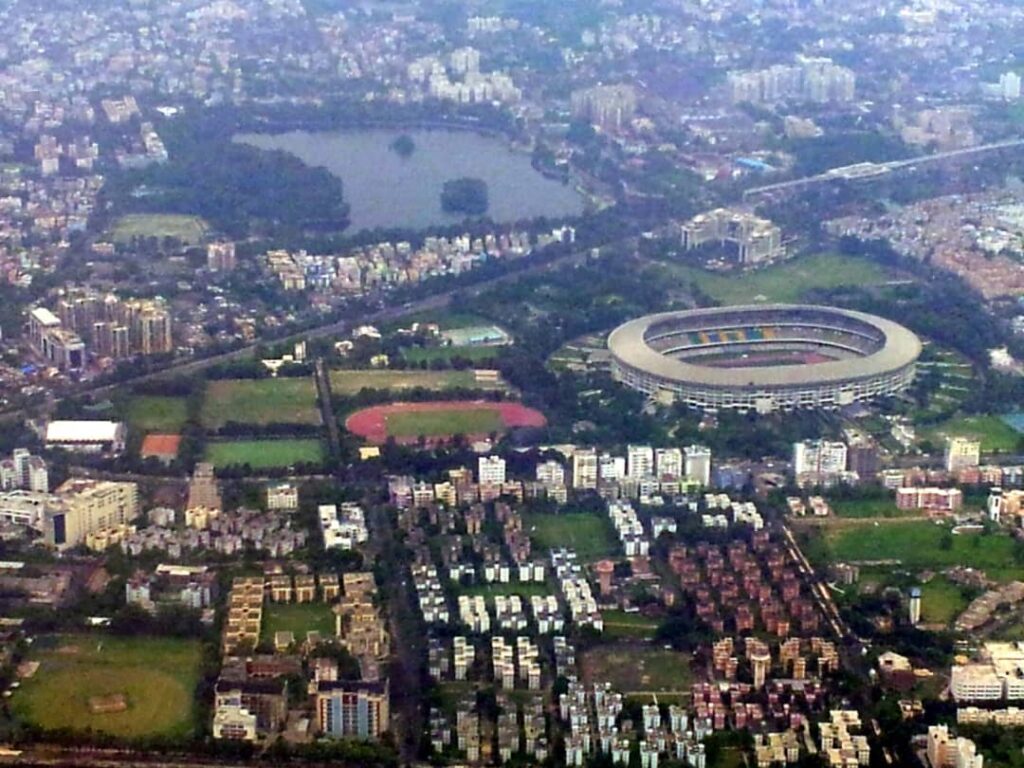
11. Saitama Stadium 2002 (Saitama, Japan)
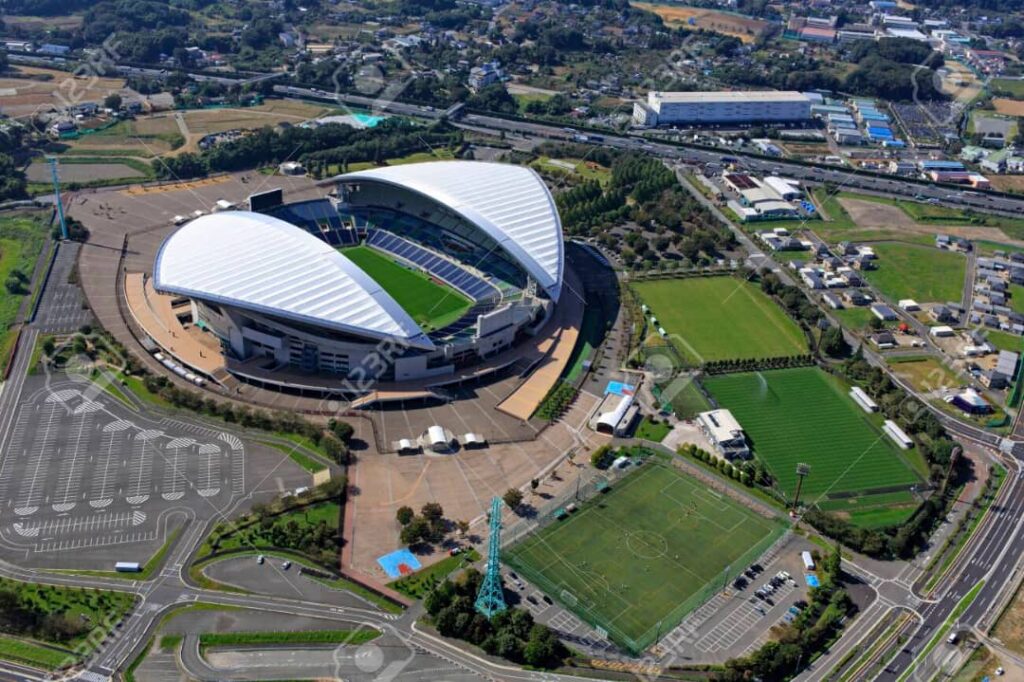
- Opened: 2001
- Capacity: 63,700
- Home to: Urawa Red Diamonds
Built for the 2002 FIFA World Cup co-hosted by Japan and South Korea, Saitama Stadium is Japan’s largest dedicated football venue. It has hosted countless international fixtures and remains a symbol of Japan’s football rise.
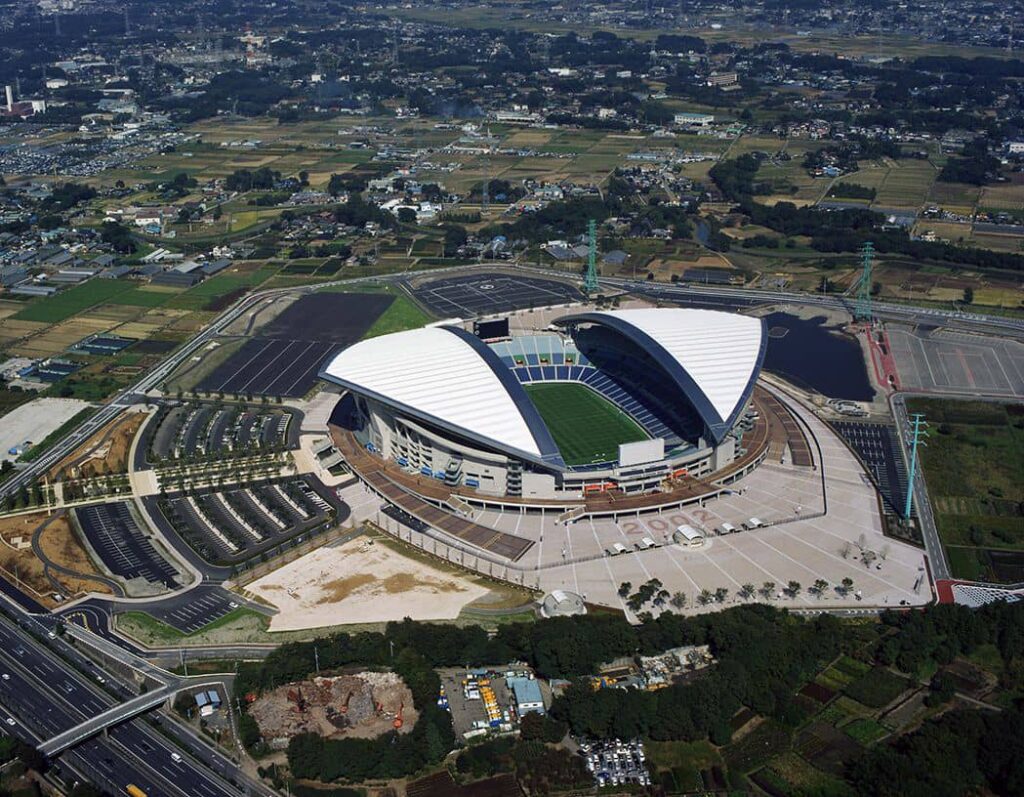
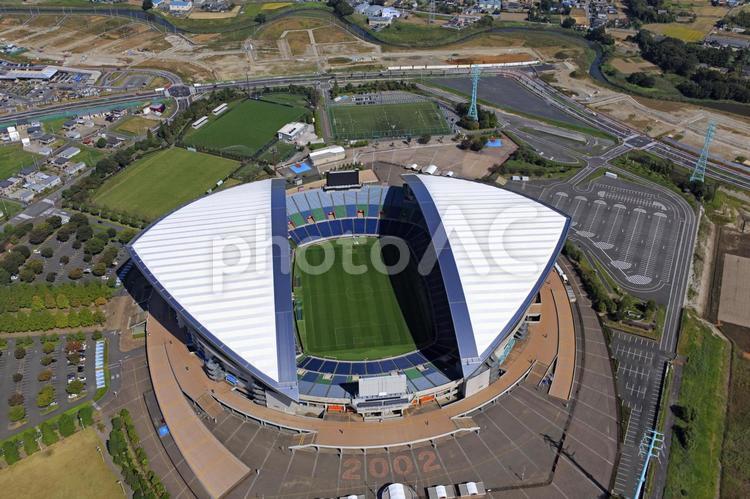

12. Lusail Stadium (Lusail, Qatar)
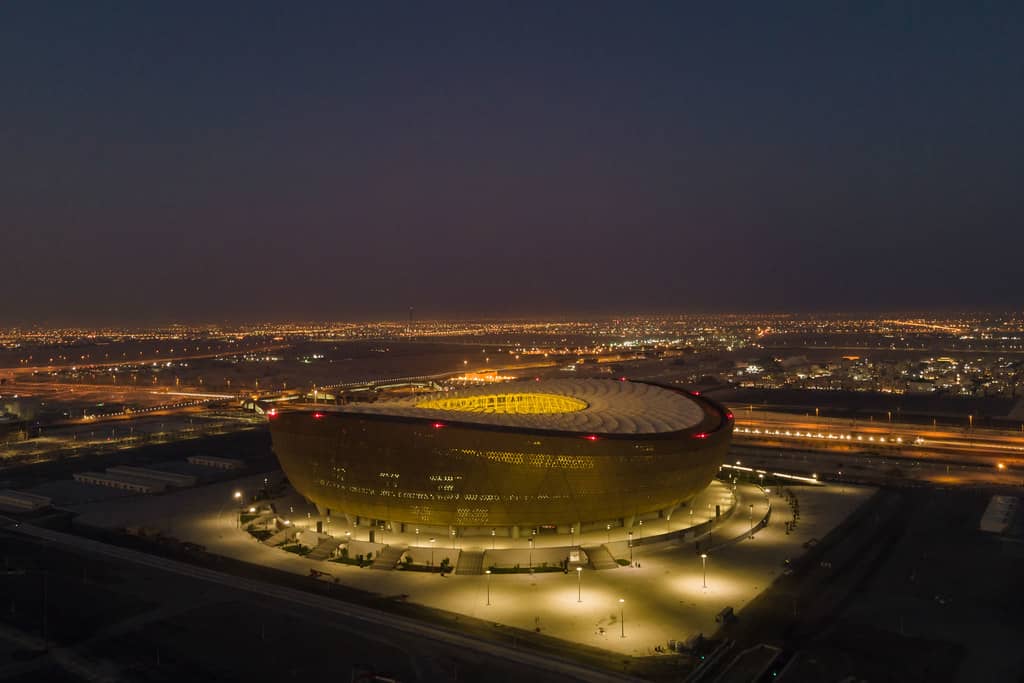
- Opened: 2022
- Capacity: 88,966
- Notable for: 2022 FIFA World Cup Final
The most modern stadium on this list, Lusail hosted the 2022 FIFA World Cup Final between Argentina and France. Its golden bowl design and sustainability features make it a model for future stadiums.
Here are four striking aerial views of Lusail Stadium in Lusail, Qatar:
- A dramatic overhead shot showcasing the stadium’s distinctive circular “golden bowl” design and its urban surroundings
- A wide-angle view highlighting its integration within the planned city of Lusail—accentuating the futuristic layout .
- A construction-phase image emphasizing the large membrane roof structure and ornamental façade
- A nighttime drone perspective capturing the stadium illuminated after sunset, with the golden exterior glowing against the evening sky
Lusail Stadium was designed by Foster + Partners and Manica Architecture, built between 2017–2021 for the 2022 FIFA World Cup Final, accommodating approximately 88,966 spectators (. After the tournament, its capacity will be reduced to around 40,000, with upper tiers being repurposed into community-focused spaces like schools, cafés, clinics, and shops .
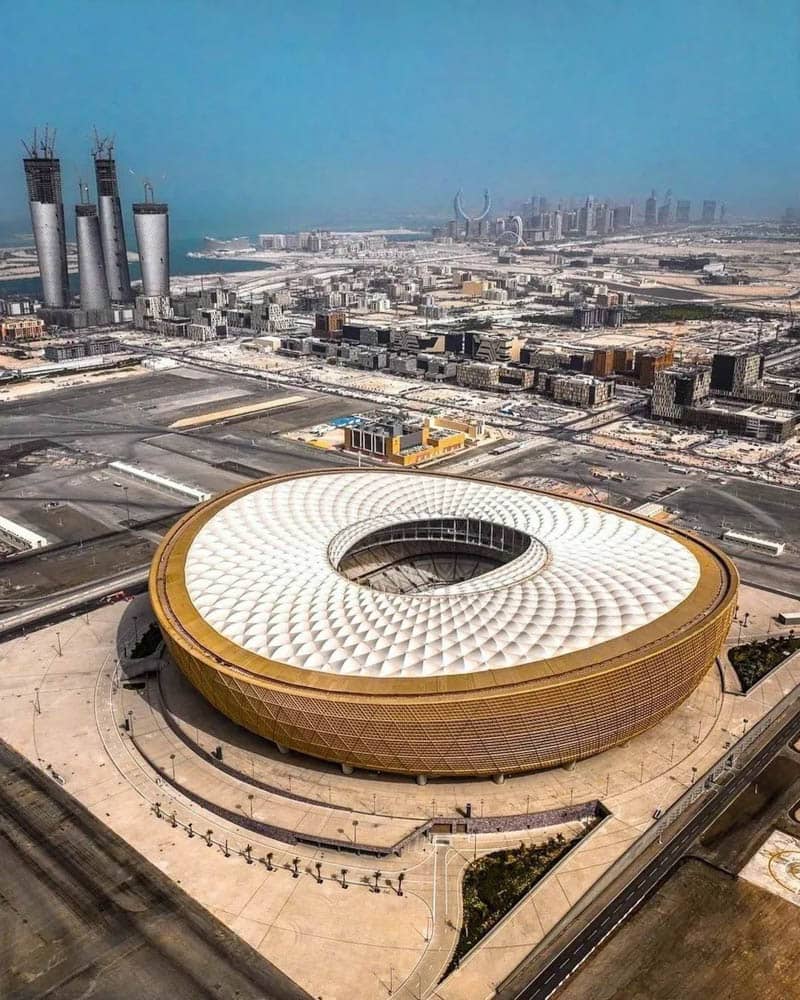

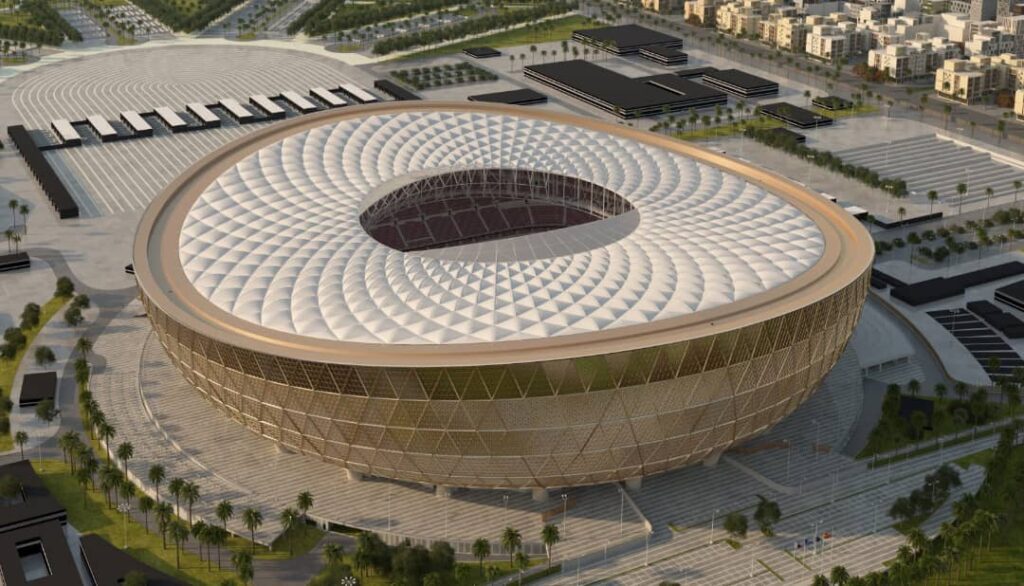
Africa
13. FNB Stadium (Soccer City) (Johannesburg, South Africa)
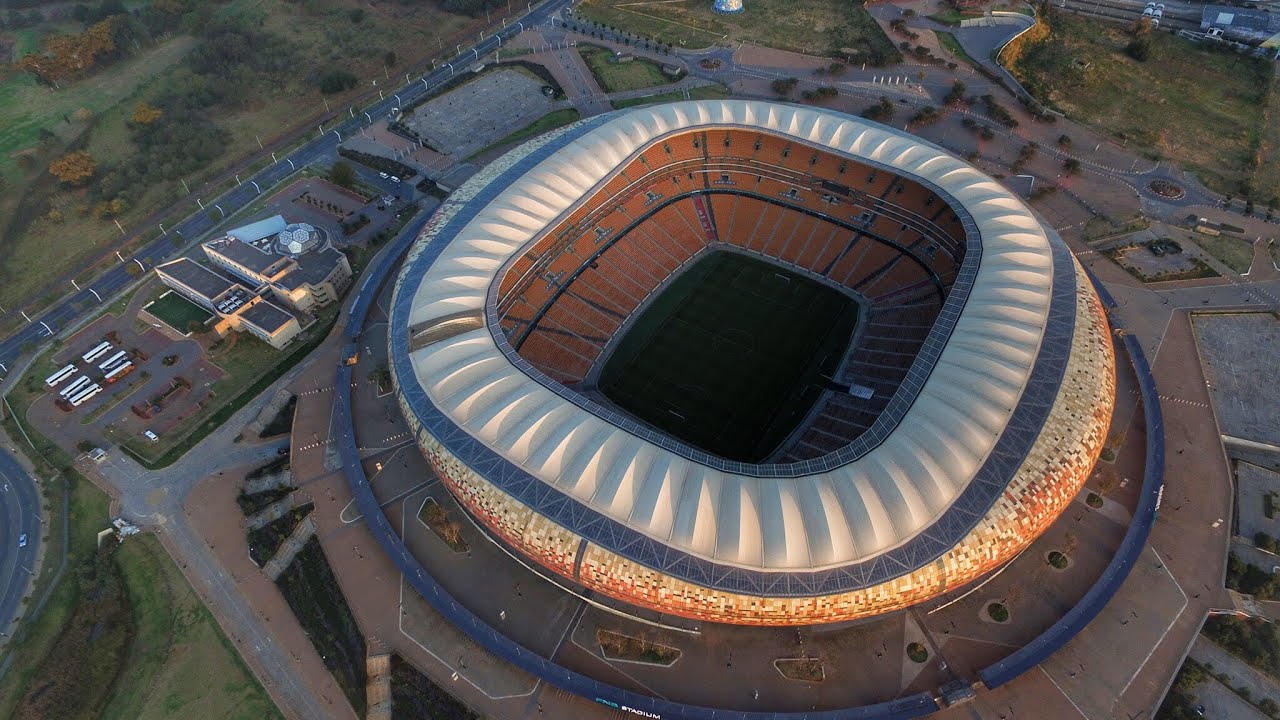
- Opened: 1989 (rebuilt 2009)
- Capacity: 94,736
- Home to: Kaizer Chiefs, South African national team
Africa’s largest stadium gained international fame during the 2010 FIFA World Cup, including the opening match and final. Its calabash-inspired design reflects African culture and identity.
)
Here are four aerial views of FNB Stadium (Soccer City) in Johannesburg, South Africa:
- A sweeping panorama showcasing its iconic, calabash-inspired bowl design atop the surrounding landscape.
- A close aerial angle focusing on the tiered outer rings and field—a great view of the stadium’s size and shape.
- A satellite image from NASA’s Visible Earth collection, highlighting the venue’s layout and nearby infrastructure.
- A vibrant colored drone shot emphasizing the seating tiers and stadium roof structure.
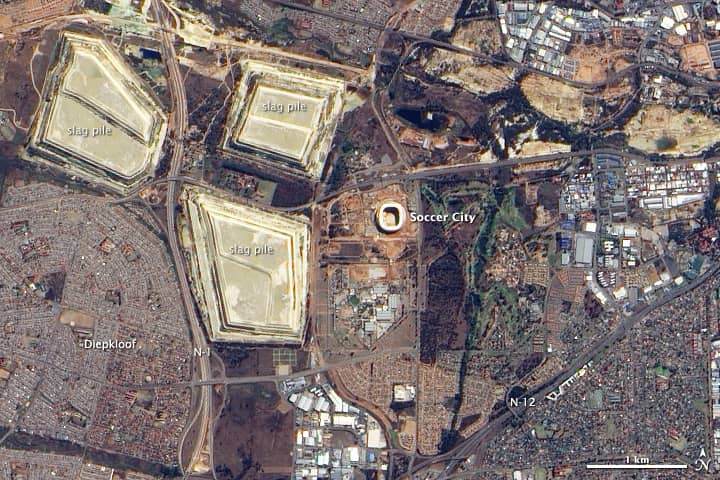
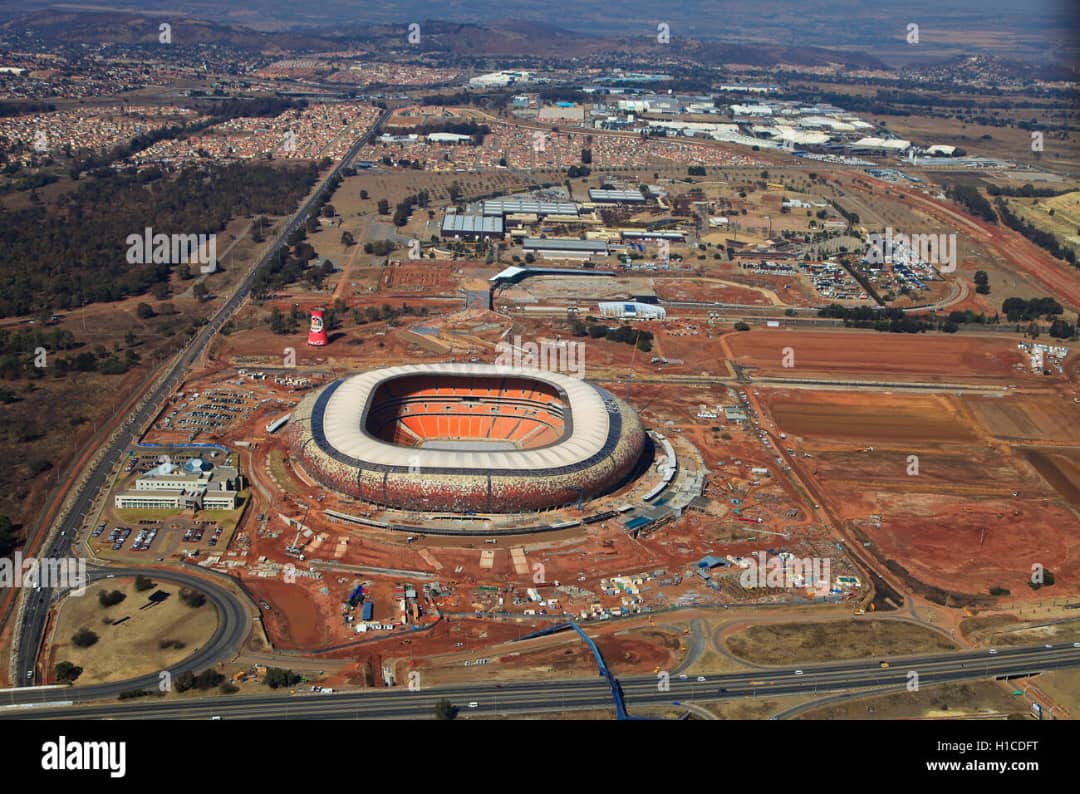
14. Cairo International Stadium (Cairo, Egypt)
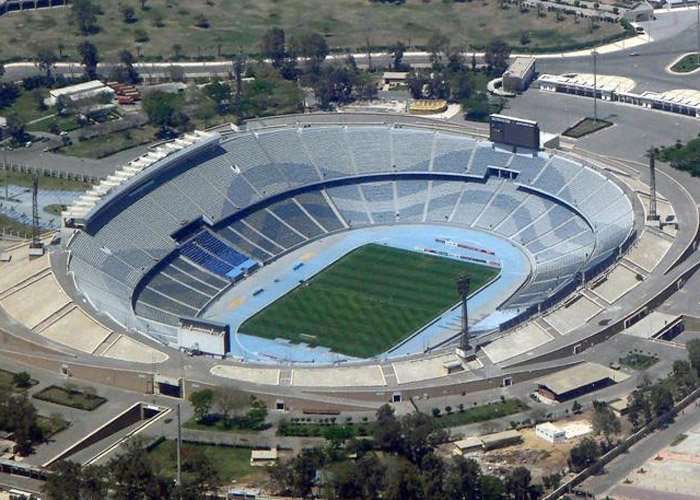
- Opened: 1960
- Capacity: 75,000
- Home to: Al Ahly, Zamalek
This multi-purpose stadium has hosted African Cup of Nations finals and intense Cairo derbies. It’s a cornerstone of Egyptian and African football culture.


Oceania
15. Melbourne Cricket Ground (MCG) (Melbourne, Australia)
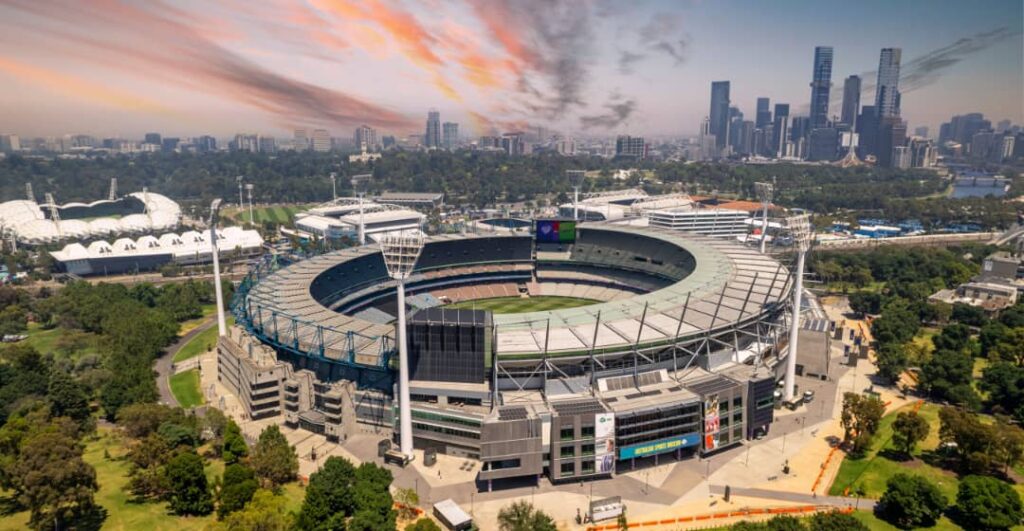
- Opened: 1853
- Capacity: 100,024
- Primary Use: Cricket, Australian Rules Football
The MCG is a temple of sport in Australia. While cricket is its main attraction, it has also hosted FIFA World Cup qualifiers, the 1956 Olympics, and massive concerts. Its versatility and size make it one of the world’s most iconic venues.
Here are four striking aerial views of the Melbourne Cricket Ground (MCG):
- A sweeping drone shot capturing the stadium’s iconic oval bowl nestled within Yarra Park.
- A top-down view highlighting the symmetrical design and lush cricket-field interior.
- A detailed aerial perspective showing spectator seating and floodlight towers.
- A colorful daytime panorama with the Melbourne skyline in the background — perfect for experiencing its scale and atmosphere.


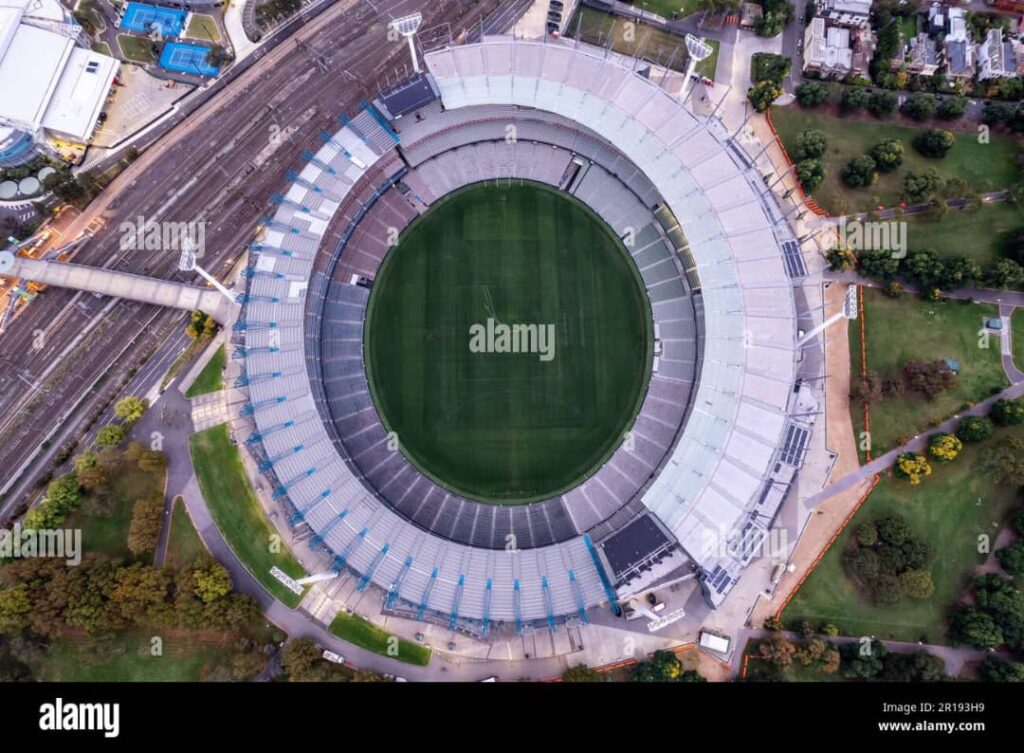
16. Eden Park (Auckland, New Zealand)

- Opened: 1900
- Capacity: 50,000
- Primary Use: Rugby and cricket
Eden Park is the beating heart of New Zealand’s sporting identity. It hosted Rugby World Cup finals in 1987 and 2011, and its atmosphere during All Blacks matches is legendary.
Here are four aerial images of Eden Park in Auckland, New Zealand:
- A sweeping view capturing the iconic oval bowl nestled within the surrounding greenery.
- A mid-angle shot offering a closer look at the structure and seating tiers.
- A higher-altitude perspective showing the stadium’s configuration and field orientation.
- A full-frame aerial capture highlighting the distinctive rectangular pitch and its urban setting.
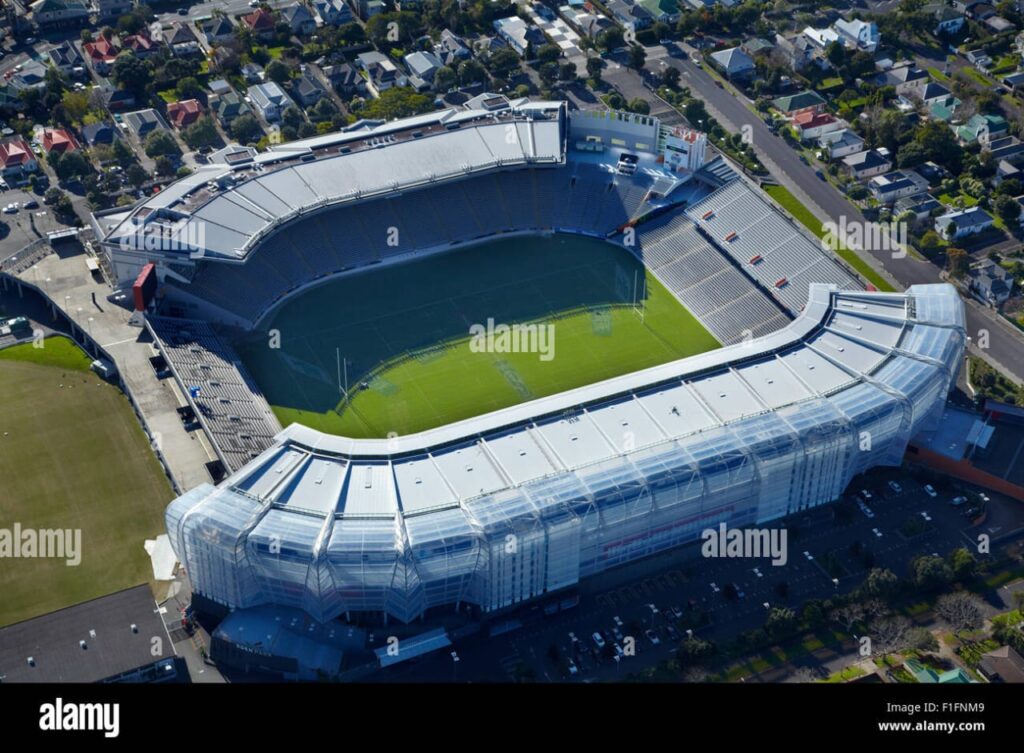
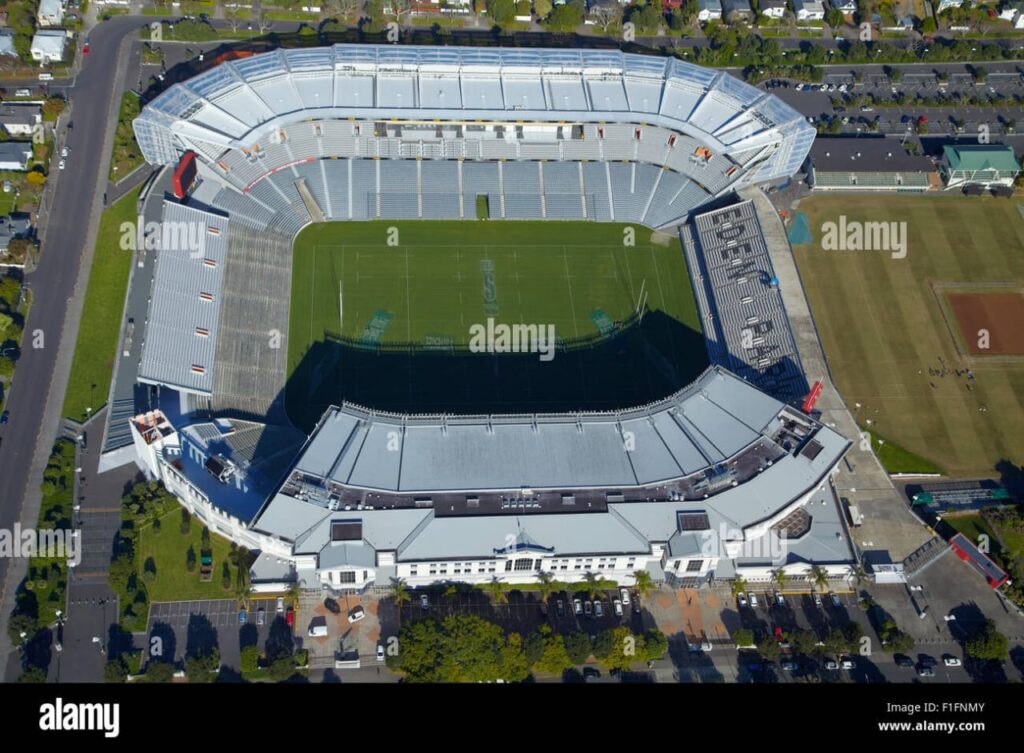
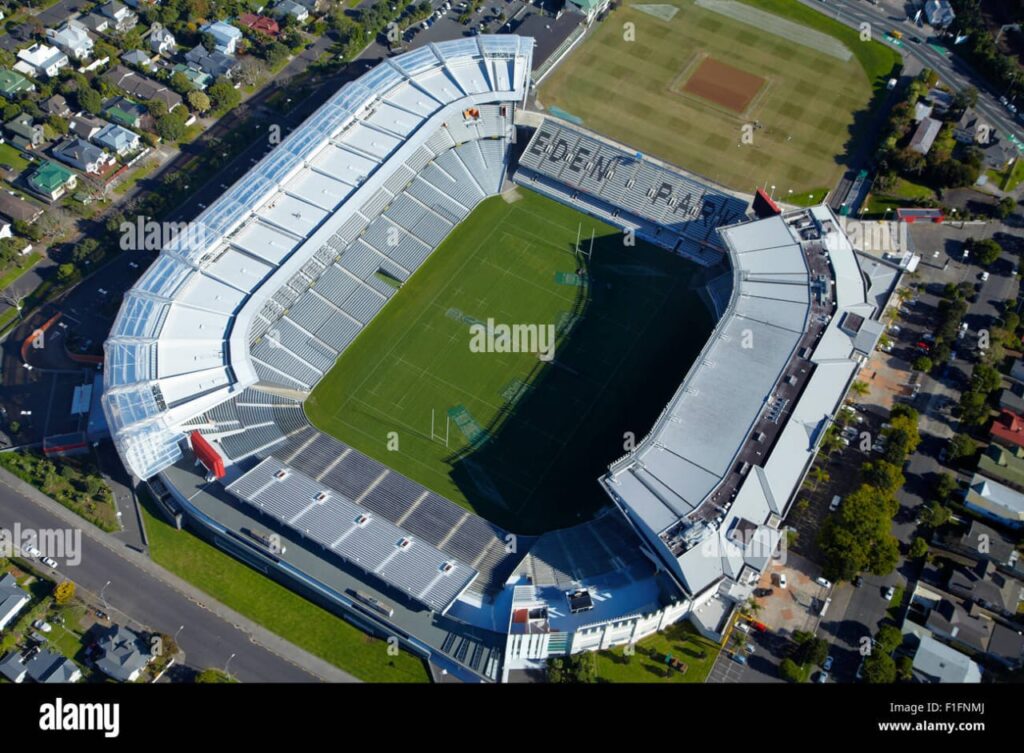
Conclusion
Stadiums are more than stages for sport—they are the theaters of human emotion, memory, and aspiration. From the colossal Maracanã to the ultramodern Lusail, from historic Wembley to intimate La Bombonera, each stadium carries a unique legacy. They stand as symbols of cultural pride, architectural excellence, and collective experience. As technology evolves and the demand for sustainability increases, the future of stadium design will likely transform. Yet, their essence—bringing people together—will always remain.
These iconic venues remind us that while the players on the field may change, the roar of the crowd, the significance of place, and the shared moments of joy and heartbreak are timeless.





